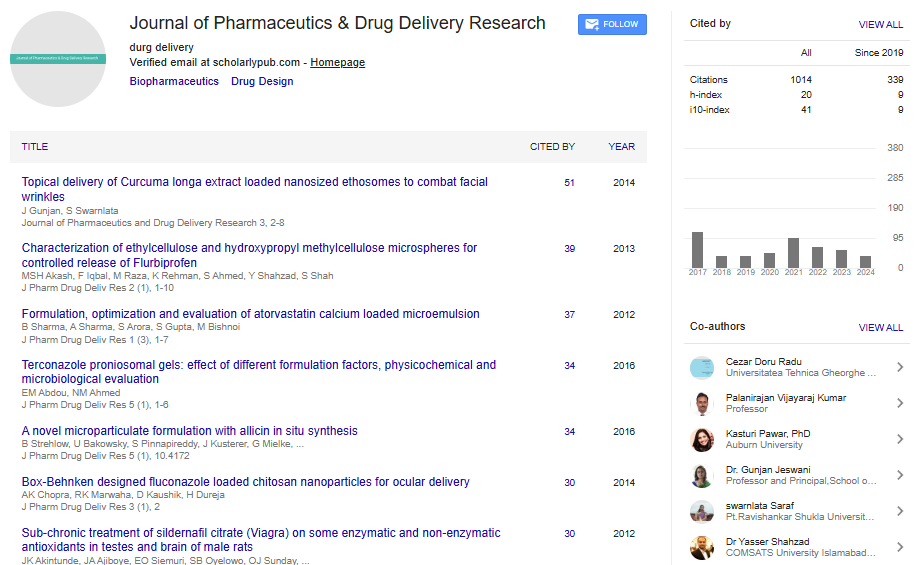Features of the dosing regimen for extravascular administration of drugs
Ilin Aleksander I and Asmanova N
Scientific Center for Anti-infectious Drugs JSC, Kazakhstan
: J Pharm Drug Deliv Res
Abstract
The main problem of the dosage regimen for extravascular administration is due to the nonuniqueness of the solution of equations for C-t blood curves. As we showed earlier, the number of solutions for them can vary from two to infinity, but the solution of inverse problems for them is limited to two variants only. In the case of biphase curves PK parameters obey the relation ka> α>β. For monophasic blood curves, regardless of the actual number of compartments in the PK model, the solution of inverse problems leads to a one-compartment model, where ka>k10. This leads to an overestimation of absorption rate constant and the volume of distribution and to understated estimates of the drug transition into tissues and its elimination from the blood. The greatest deviations, naturally, take place for pseudo one-compartment systems. With this in mind, the dosing regimen for anti-infective drug - PA was based on experimental data. The limiting values of Cmin and Cmax were obtained by measuring the concentration of PA before the next dose administration and after of time equal to tmax, respectively. The experimental Cmin-t and Cmax-t dependences reflect the real dynamics of their changes from the dose, the duration of the drug administration and individual features of volunteers. The accumulation indexes for PA were calculated on basis of the values of AUC and the terminal phase of PK curve.
Biography
Ilin Aleksander I is a Chairman of the Board of JSC - Scientific Center for Anti-infection Drugs, doctor of science. He has published 27 papers in reputed journals and is the author of 7 medical patents for bactericidal drugs of wide-spectrum action, based on iodine-organic compounds. ilin_ai@mail.ru
 Spanish
Spanish  Chinese
Chinese  Russian
Russian  German
German  French
French  Japanese
Japanese  Portuguese
Portuguese  Hindi
Hindi 
